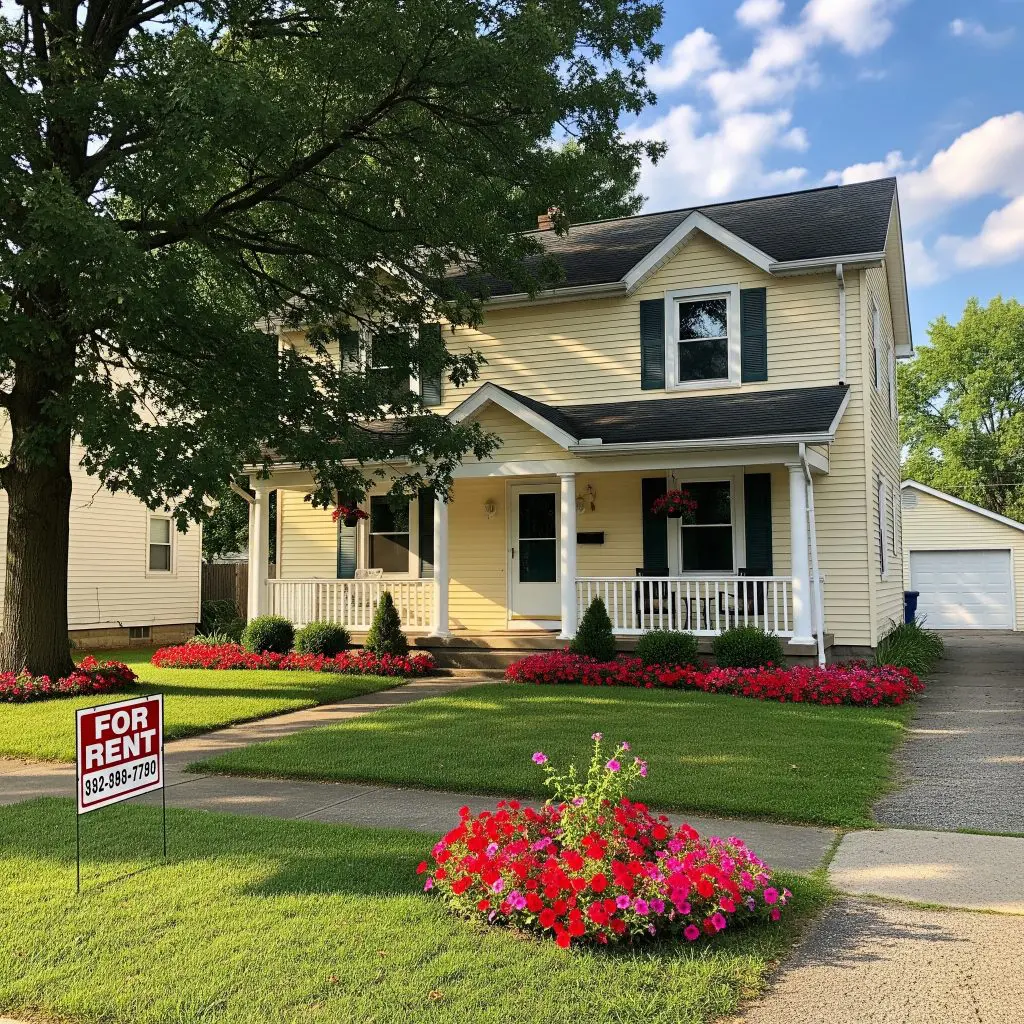Signs of a Housing Market Crash to Look For
A Professional Investor’s Guide to Protecting and Positioning Your Portfolio
Published: October 2025
By: GHC Funding | Your Source for DSCR Loans, SBA Financing & Alternative Real Estate Lending
📞 833-572-4327 | 🌐 www.ghcfunding.com
- Signs of a Housing Market Crash to Look For
- Introduction: Why Every Investor Should Watch for Early Warning Signs
- 1. Rapidly Rising Mortgage Rates
- 2. Oversupply of New Construction
- 3. Declining Home Sales Volume
- 4. Increasing Foreclosures and Delinquencies
- 5. Widening Cap Rates and Falling Appraisals
- 6. Slowing Rental Growth
- 7. Investor Overleverage
- How to Protect Your Investments
- GHC Funding: The Go-To Partner in Uncertain Markets
- Geo-Targeting: Ohio Investment Hotspots to Watch
- External Resources for Ohio Real Estate Investors
- Q&A: Common Investor Questions
- Final Thoughts: Stay Informed, Not Fearful
- Get a DSCR loan in Ohio.
- Introduction: Why Every Investor Should Watch for Early Warning Signs
- 1. Rapidly Rising Mortgage Rates
- 2. Oversupply of New Construction
- 3. Declining Home Sales Volume
- 4. Increasing Foreclosures and Delinquencies
- 5. Widening Cap Rates and Falling Appraisals
- 6. Slowing Rental Growth
- 7. Investor Overleverage
- How to Protect Your Investments
- GHC Funding: The Go-To Partner in Uncertain Markets
- Geo-Targeting: Ohio Investment Hotspots to Watch
- External Resources for Ohio Real Estate Investors
- Q&A: Common Investor Questions
- Final Thoughts: Stay Informed, Not Fearful
- Get a DSCR loan in Ohio.
Introduction: Why Every Investor Should Watch for Early Warning Signs
Real estate investors across Ohio—from Cleveland to Columbus to Cincinnati—know that housing markets move in cycles. After years of low interest rates, rapid appreciation, and record-high investor activity, many are asking the same question:
“Are we on the verge of another housing market crash?”
The answer isn’t simple—but there are unmistakable indicators that seasoned investors track. Whether you manage a portfolio of rentals, short-term Airbnb properties, or multifamily buildings, understanding these key economic signals helps you make smarter buy, sell, and refinance decisions.
Need capital? GHC Funding offers flexible funding solutions to support your business growth or real estate projects. Discover fast, reliable financing options today!
⚡ Key Flexible Funding Options:
GHC Funding everages financing types that prioritize asset value and cash flow over lengthy financial history checks:
DSCR Rental Loan
- No tax returns required
- Qualify using rental income (DSCR-based)
- Fast closings ~3–4 weeks
SBA 7(a) Loan
- Lower down payments vs banks
- Long amortization improves cash flow
- Good if your business occupies 51%+
Bridge Loan
- Close quickly — move on opportunities
- Flexible underwriting
- Great for value-add or transitional assets
SBA 504 Loan
- Low fixed rates through CDC portion
- Great for construction, expansion, fixed assets
- Often lower down payment than bank loans
🌐 Learn More
For details on GHC Funding's specific products and to start an application, please visit our homepage:
 SBA Loan to Expand Retail Business in California Now" loading="lazy" srcset="https://www.ghcfunding.com/wp-content/uploads/2025/11/Gemini_Generated_Image_4988or4988or4988.png 1024w, https://www.ghcfunding.com/wp-content/uploads/2025/11/Gemini_Generated_Image_4988or4988or4988-300x300.png 300w, https://www.ghcfunding.com/wp-content/uploads/2025/11/Gemini_Generated_Image_4988or4988or4988-150x150.png 150w, https://www.ghcfunding.com/wp-content/uploads/2025/11/Gemini_Generated_Image_4988or4988or4988-768x768.png 768w" sizes="auto, (max-width: 1024px) 100vw, 1024px" />
SBA Loan to Expand Retail Business in California Now" loading="lazy" srcset="https://www.ghcfunding.com/wp-content/uploads/2025/11/Gemini_Generated_Image_4988or4988or4988.png 1024w, https://www.ghcfunding.com/wp-content/uploads/2025/11/Gemini_Generated_Image_4988or4988or4988-300x300.png 300w, https://www.ghcfunding.com/wp-content/uploads/2025/11/Gemini_Generated_Image_4988or4988or4988-150x150.png 150w, https://www.ghcfunding.com/wp-content/uploads/2025/11/Gemini_Generated_Image_4988or4988or4988-768x768.png 768w" sizes="auto, (max-width: 1024px) 100vw, 1024px" />
In this guide, we’ll explore the top signs of a potential housing market downturn, explain how rising rates and tighter credit conditions influence valuations, and show how GHC Funding can help you secure flexible capital solutions to protect your investments.
1. Rapidly Rising Mortgage Rates
As of October 2025, mortgage rates for investment properties have climbed sharply compared to two years ago:
| Loan Type | Typical Rate (as of Oct 2025) | Key Features |
|---|---|---|
| DSCR Loan | 7.25% – 8.25% | No personal income check, property cash flow-based |
| SBA 7(a) Loan | 8.00% – 10.00% | Up to 90% LTV for owner-occupied CRE |
| SBA 504 Loan | 7.75% – 9.25% | Long-term fixed rates for fixed assets |
| Bridge Loan | 9.50% – 11.50% | Short-term financing for acquisitions/refis |
When rates rise, affordability drops, reducing buyer demand. As fewer qualified buyers compete for properties, price growth stalls—and sometimes reverses.
For investors, this often leads to extended marketing times, slower lease-ups, and pressure on NOI (Net Operating Income).
2. Oversupply of New Construction
An influx of speculative building activity—especially in metros like Columbus (ZIP 43215) or Dayton (ZIP 45402)—can indicate overheating.
Warning signs include:
- Large numbers of unsold or unfinished homes
- Declining builder sentiment (tracked via the NAHB Housing Market Index)
- Increased concessions or incentives from developers
When inventory outpaces absorption, prices stagnate, and distressed listings begin to rise.
3. Declining Home Sales Volume
Before home prices fall, sales activity declines first. Look for:
- Fewer pending sales month-over-month
- Reduced mortgage application volume
- Declining investor purchases in key markets like Cleveland’s Old Brooklyn (44109) or Cincinnati’s Over-the-Rhine (45202)
You can track these metrics through data from the Ohio REALTORS® Association and the Federal Reserve Bank of Cleveland.
4. Increasing Foreclosures and Delinquencies
A spike in loan defaults, late payments, or short sales is one of the most reliable indicators of financial strain.
While current levels in Ohio remain moderate, higher interest rates and inflationary pressures may cause stress among highly leveraged landlords and homeowners.
Keep an eye on local court filings and Ohio Housing Finance Agency updates for early shifts in foreclosure patterns.
5. Widening Cap Rates and Falling Appraisals
When financing costs rise, investors demand higher returns, which translates into rising capitalization (cap) rates.
This results in lower property valuations, especially for commercial and multifamily assets.
Example:
If a property generating 0,000 in NOI was valued at a 5% cap rate ( million), an increase to a 6% cap reduces its value to .67 million—a 16.5% decline.
Cap rate expansion typically signals investors’ loss of confidence in future price growth.
6. Slowing Rental Growth
Rental markets in Ohio’s major metros—such as Cleveland Heights, Toledo, and Akron—have shown resilience, but there are signs of plateauing rent growth in Class A assets.
Watch for:
- Flat or negative rent trends across luxury segments
- Concessions like “first month free” or “reduced deposits”
- Extended vacancy periods between tenants
For investors, slowing rent growth may compress DSCR ratios, impacting refinance potential and overall cash flow.
7. Investor Overleverage
A major precursor to housing corrections is overleverage—investors taking on excessive debt during bullish cycles.
With today’s rates and tighter lending standards, highly leveraged portfolios are more exposed to valuation risk.
This is where smart refinancing and portfolio restructuring through lenders like GHC Funding can provide stability.

How to Protect Your Investments
1. Strengthen Cash Flow
Prioritize income-producing assets that maintain positive DSCR even if rents dip 5–10%.
2. Refinance Strategically
Lock in longer-term fixed-rate debt where possible to avoid payment shocks.
3. Diversify by Market
Balance exposure between high-growth metros like Columbus and more stable cash-flow markets like Dayton or Toledo.
4. Build Liquidity
Maintain cash reserves for value-add acquisitions when competitors are forced to sell.
5. Partner with Flexible Lenders
GHC Funding provides fast, alternative capital access through DSCR, bridge, and SBA programs—so you can act decisively even when traditional banks pull back.
The Ultimate DSCR Loan for Rental Property Quiz

Are you looking to expand your real estate investment portfolio? A DSCR loan might be the perfect tool to help you achieve your goals without relying on traditional income documentation. Test your knowledge with this quiz to see if you're ready to master the intricacies of a DSCR loan for rental property.
GHC Funding: The Go-To Partner in Uncertain Markets
GHC Funding helps investors stay resilient during market cycles with:
✅ No personal income verification (DSCR-based)
✅ Loans up to $15 million
✅ Quick closes (10–15 business days)
✅ Bridge-to-permanent refinance options
✅ Nationwide coverage including Ohio
Explore programs at www.ghcfunding.com or call 833-572-4327 to speak with a loan advisor.
Quiz on Ohio Rental Property Laws

This quiz will test your knowledge of the essential laws and regulations for owning and managing an Ohio rental property. Understanding these rules is crucial for protecting your investment and ensuring a smooth tenancy.
Geo-Targeting: Ohio Investment Hotspots to Watch
- Columbus (43215): Diverse economy, anchored by Ohio State University and tech expansion.
- Cleveland (44113): Affordable inventory and stable rental demand.
- Cincinnati (45202): Strong logistics, healthcare, and tourism sectors.
- Toledo (43604): Steady manufacturing base, emerging for SFR rentals.
- Akron (44308): High-yield multifamily opportunities with consistent tenant demand.
External Resources for Ohio Real Estate Investors
- Ohio REALTORS® Association
- Ohio Department of Commerce – Division of Real Estate & Professional Licensing
- Federal Reserve Bank of Cleveland
- Ohio Housing Finance Agency
- Cleveland State University’s Center for Economic Development
Test Your Ohio Investor Prowess!

Ohio, often called the "Buckeye State," is a diverse and strategically important state in the American Midwest. Known for its strong manufacturing heritage, growing tech sector, and significant role in American history, Ohio offers a stable and attractive real estate market for investors. If you're considering expanding your portfolio in this region, especially with flexible financing options like no income verification rental property loans for new investors, understanding the state's key characteristics is a valuable asset.
How well do you know the heart of it all? Take our quick quiz about Ohio!
Q&A: Common Investor Questions
Q1: Are we headed for another 2008-style crash?
Not likely. Lending standards and borrower equity levels are far stronger than during the subprime era.
Q2: Should I buy during a downturn?
Yes—if you have stable financing and focus on cash flow, downturns can be excellent buying opportunities.
Q3: How can I monitor local market health in Ohio?
Track MLS data, housing inventory, rent trends, and foreclosure reports through the Ohio REALTORS® and state databases.
Q4: Can DSCR loans protect me in volatile markets?
Yes—DSCR loans base qualification on property performance, not personal income, making them ideal during uncertainty.
Q5: What’s the best defensive strategy for investors right now?
Maintain liquidity, reduce leverage, and lock in fixed-rate loans for long-term stability.
Q6: How fast can I refinance through GHC Funding?
As little as 10–15 business days, depending on property and documentation.
Q7: Does GHC Funding work with LLCs and entities?
Yes, entity-based lending is encouraged for both liability protection and tax efficiency.
Final Thoughts: Stay Informed, Not Fearful
Market cycles are natural—and for savvy investors, downturns can be the best time to buy.
By recognizing the signs of a potential housing correction and partnering with experts like GHC Funding, you can position yourself to not only survive but thrive in any market.
📞 Call to Action
Ready to stabilize your portfolio or leverage new opportunities in the Ohio market?
👉 Visit www.ghcfunding.com or call 833-572-4327 to speak with a GHC Funding advisor today.
Get a DSCR loan in Ohio.
Downloadable “Housing Market Crash Indicators Checklist” (PDF)
Get a No Obligation Quote Today.
Use these trusted resources to grow and manage your small business—then connect with GHC Funding
to explore financing options tailored to your needs.
GHC Funding helps entrepreneurs secure working capital, equipment financing, real estate loans,
and more—start your funding conversation today.
Helpful Small Business Resources

